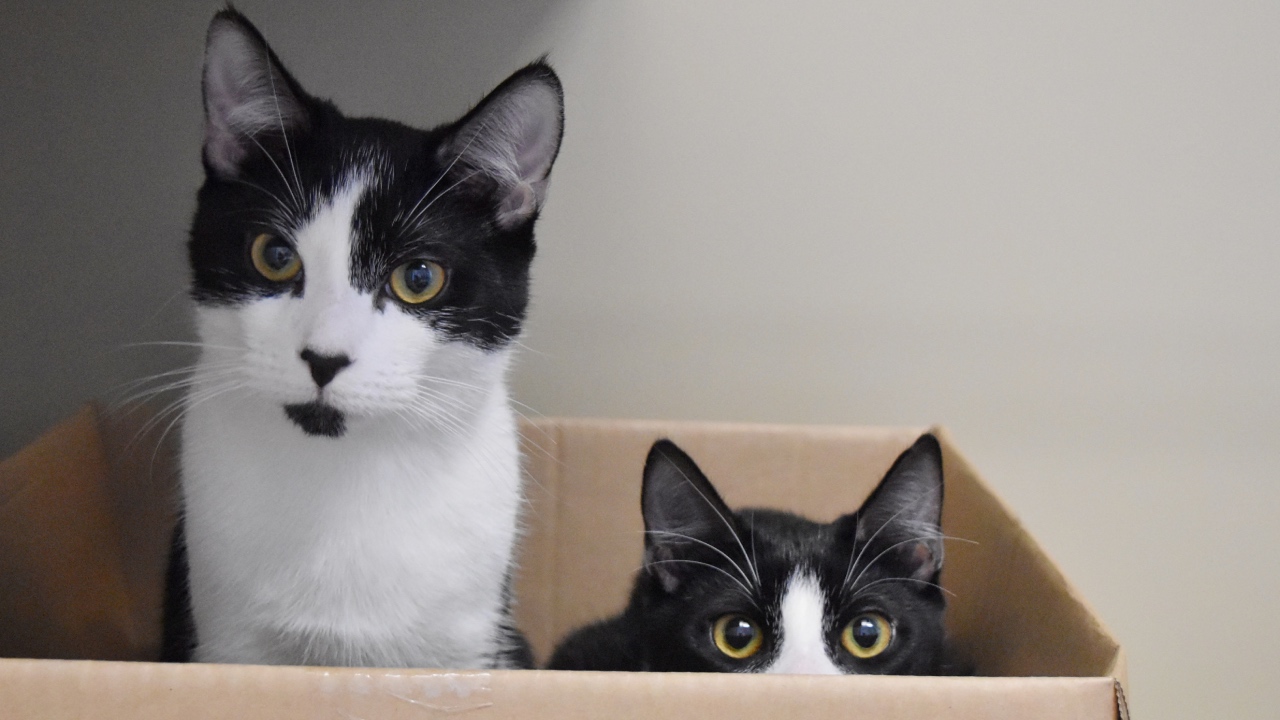Keeping your cat safe while renovating

Planning renovations or starting a DIY home project? It’s worth it in the end, but the process can be stressful for people and pets. With a little planning, you can ease the stress and keep your cat safe as you transform your home.
Plan ahead
Before starting your home improvement projects, make sure you have made arrangements to keep your cat safe during this time. Renovation chemicals, debris and noises can be harmful to your cats’ health and even lead to behavioural problems. Workers coming in and out of your home create a high risk of your cat escaping.
Pets need to be kept away from work areas for their safety and the safety of workers. If the planned work is extensive or your pet is very sensitive, it would be worth boarding them for the duration of construction; you’ll have peace of mind knowing they won’t be exposed to anything dangerous and won’t get frightened and run away.
Creating a safe space
If your cat is staying home with you, set them up in a separate room with everything they need: litter tray, food and water, toys, and their favourite bedding. Choose a room as far as possible from the construction zone, that workers do not need to access, and put a big “Do Not Open” sign on the door. Make sure windows and flyscreens are secured. Even with all these measures in place there is a high risk of your cat escaping during renovations so guarantee your cat’s microchip and registration details are up to date with the Pet Registry.
Cats are especially sensitive to noise and can become stressed with the unfamiliar and often very loud sounds associated with construction. Even the most confident cats want to have a safe, quiet space free from startling noise. When setting up their room it is a good idea to include a high perch and an igloo bed or box that they can retreat to. This will help them to feel secure, and calming interventions such as Feliway, Zylkene and Tranquil Treats can also be beneficial. Cats are creatures of habit, so maintaining their normal feeding, playtime and sleep routines will reassure them.
Hazards for your cat
Small particles of dust and debris from renovation work can easily attach to your cat’s coat, their bedding and get into their lungs and eyes. This can cause difficulty breathing, asthma, eye irritations, skin allergies and/or toxicity if they ingest chemicals or foreign materials. Keep their room scrupulously clean and monitor their health closely.
Many older homes have lead paint and asbestos, which are extremely dangerous for people and for pets, so consult professionals before embarking on any DIY.
Cats are more sensitive to fumes than we are, so don’t assume that because you don’t notice an odour your cat is safe. Keep in mind a cat’s lungs are much smaller than ours and their sense of smell is much better than ours. Renovation work such as painting, floor finishing, using adhesives and varnishing are all potentially harmful to your cat. Make sure there is sufficient air flow to allow fresh air into areas where there may be heavy fumes not only for your cat’s safety, but for the safety of yourself and workers. Keep your cat away from these areas in a separate room with ample air flow for at least 1-2 days to allow time for fumes to dissipate. Even if your cat is mostly staying home during renovations, you should consider boarding them during dangerous, noisy, or fume-emitting jobs.
Document all the products used (safety data is usually printed on the packaging; take photos to record all the paints and chemicals used for your renovations). If your pet somehow ingests something, the product information will help your vet to determine the best treatment.
Adding ‘feline features’
While you’re renovating, consider including some special “feline features” to your home, such as indoor catwalks, shelves and perches. It is a great idea to make use of vertical space within your home as cats love high vantage points which enable them to look down on their world. You might even incorporate a “catio” or access to an outdoor enclosure for your feline friend to enjoy. By creating a secure outdoor area for your cat to explore they will be protected from the dangers of cars, cat fights and injury all the while protecting not just your precious pet but also native wildlife and birds.
Once the renovations are done, thoroughly clean your home and remove all potential hazards. If you’ve made big changes, gradually introduce your cat back into the home: things will look and smell different to them, so make sure there are some blankets and toys that have your cat’s scent on them. This will reassure them that they are indeed “home”.
For general advice on cat care and everything feline, call the Cat Protection Society of NSW on 02 9557 4818 or visit their website www.catprotection.org.au
This is a sponsored article produced in partnership with the Cat Protection Society.
Image credits: Supplied - Cat Protection Society
